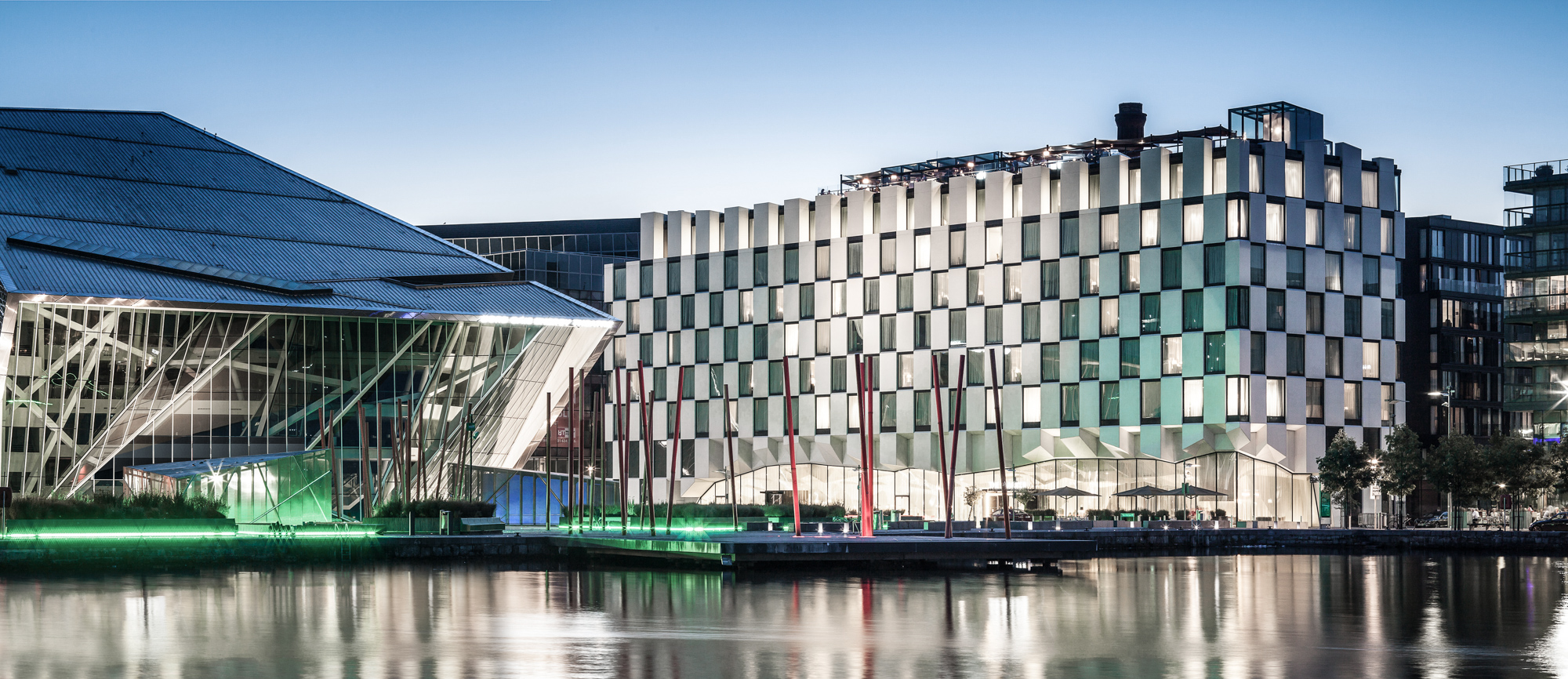
In full Bloomsday
Neil D.A. Stewart stays at the Anantara The Marker in Dublin, and goes on the Ulysses trail

Neil D.A. Stewart stays at the Anantara The Marker in Dublin, and goes on the Ulysses trail

James Joyce’s Ulysses is the greatest novel in the English language, and maybe my favourite, too. Famously, this reimagining of the Odyssey, transferred to early twentieth-century Dublin, in which the mythic adventures of the legend are refigured into more domestically scaled but no less overwhelming challenges and scrapes – takes place over the course of a single day, 16th June. On that date, christened “Bloomsday”, Joyce enthusiasts descend on Dublin to retrace the steps of its peripatetic central character, Leopold Bloom, as he passes his extraordinary, ordinary day.
so much has changed a century later, and so much seems unchanged
It’s been more than a century since Joyce’s novel took its appropriately circuitous route to publication – it was banned for sale in the US and the UK under obscenity laws, a decision that somewhat recalls the scene in Douglas Adams where a judge finds life itself in contempt of court. Ulysses was published initially in February 1922 by the fearless Parisian publisher and founder of the original Shakespeare and Company bookshop, Sylvia Beach. Approaching Dublin with Ulysses in mind, if not in hand, is like wearing a set of bifocals that fractures the city into complementary parallels: so much has changed a century later, and so much seems unchanged.
The new is much in evidence on the Grand Canal Quay area, where Anantara The Marker Dublin Hotel now stands amid stark new buildings such as the Bord Gaís Energy Theatre (a telling admixture of culture and big business) and One Grand Canal Square, whose glass front pleasingly reflects the Anantara’s white and blue checkerboard of a front. Also new, but immediately old: the city’s Conference Centre, onto which my bedroom window at Anantara looks: designed by Kevin Roche and known colloquially (without, I gathered, an abundance of affection) as both “the Dyson” (after the expensive devices marketed by the famous Brexitist), and “the beer can”, because it looks like one on the tilt. It’s a blank off-white cube into which a massive glass cylinder has been set at a backwards-teetering angle, a legless reveller upheld by grim-faced bouncers. At night, concentric rings around its middle portion lit up neon green, proving there’s no building that bad lighting can’t make worse. Fortunately, curtains drawn, the Anantara room is a winner, with royal purple carpeting, characterful modernist paintings, white furniture, and a grand-sized bathroom with Voya products. The layouts, crowded into an oddly shaped building, left a strange dead space in one corner of the room’s lounge, too small to do anything with design wise, yet large enough to be peculiar.

Anantara The Marker, Dublin
No dimensional oddities in the ground floor dining room, which is broad and well designed, with an undulating tessellated white ceiling that bounces back the warm light from bulbs pitched at just the right level to generate atmosphere without rendering the menu unreadable. Local ingredients feature prominently, with Irish beef, prawns, Howth Bay smoked salmon and (from slightly further afield, in Wexford) crab. The menu isn’t studded with surprises – a lot of meat, a lot of fish, a short raw menu, the inevitable colcannon – but everything I ate, including sea trout pastrami and a beautifully cooked fillet steak, was well presented and delicious, and the staff were effortlessly charming. One small misstep: the (excellent) bread came with a quenelle of vanilla truffle butter which was exactly as unappetising as that combination of flavours sounds. Let butter be butter.

Anantara The Marker, Dublin
When it comes to the morning after the night before, an Irish buffet breakfast runs the Indian megahotel breakfast a close second in my league table of favourites. There’s a certain kind of Irish sausage that’s so wrong it’s right: as springy as a frankfurter in texture but made (unlike a frankfurter) of actual meat. Black pudding, white pudding, bacon: About the only thing missing from the offer is kidneys, the foodstuff which features prominently and unforgettably in the opening scene of Ulysses, whose absence can certainly be forgiven. I fill my plate slightly shamefully, feeling as scrutinised as the guilt-ridden gourmet about to consume the ortolan. Clear everyone from the room! Or drape a hood on me, whisper “Just a reminder: it’s all you can eat” and let me chow down.

Anantara The Marker, Dublin
So much for the contemporary. The other view of Dublin reveals that a number of the pubs mentioned in Joyce’s works and frequented by the man himself remain open and pretty much unchanged (except, thankfully, for being smokeless). I sank a pint of Guinness at Mulligans on Poolbeg Street, in which a portion Joyce set a portion of his short story “Counterparts”. The time to do Bloomsday – a pub crawl, ultimately, in the cold reality of 2024 – is when you’re young, a fresh reader of Ulysses; yet it strikes me, a quarter-century on from reading it, how fresh it remains in the memory, its mix of the grubby and the gleamingly new, once read, never forgotten. As Joyce’s spirit permeates Dublin, so you too can imbibe it, closing a loop that spans a hundred years. C
Anantara The Marker Dublin, Grand Canal Quay, Docklands, Dublin, D02 CK38, Ireland
Anantara.com